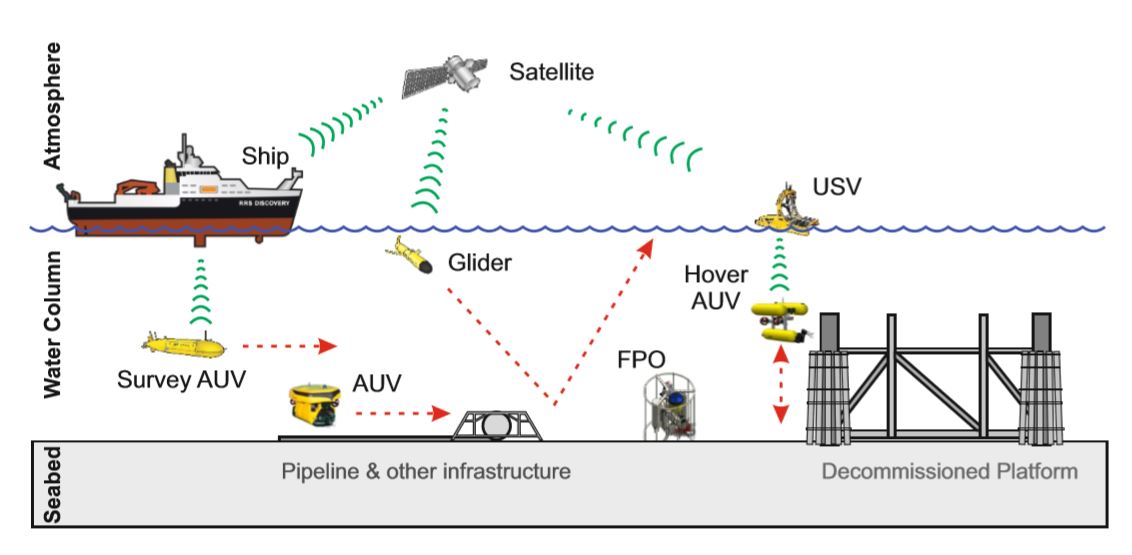
Scientists at the NOC have released a forward-looking review of how marine robotic capabilities can support the environmental monitoring needed for decommissioning oil and gas installations.
This review shows how already-existing sensors and autonomous platforms could be used to assess all the types of marine environment encountered during decommissioning monitoring. The approach was tested and refined in consultation with representatives from industry, environmental managers and regulators.
Decommissioning of oil and gas installations is big business, with the estimated costs exceeding 50 billion pounds in the UK alone. It also has the potential to impact the marine environment. To try to safeguard against these impacts it is important that regular monitoring is carried out to check for potential pollutants and their effects to marine life. This assessment represents a major challenge, with over 400 decommissioning programmes in the British part of North Sea alone. The potential costs of this are large, which will likely limit the regularity of monitoring, running the risk of missing impacts to the marine environment when there is still time to deal with them.
Autonomous systems are already making step-changes in the way that marine survey and scientific investigations are being done, allowing high-resolution information on large areas of the marine environment to be collected much more quickly and frequently than before. The costs of these systems are reducing all the time.
NOC scientist, Dr Daniel Jones, the lead author of this review said “Industry and the government regulators are taking note of these new technologies. Expert syntheses, such as this, will be helpful in developing a more cost-effective but still rigorous approach for the future.”
The review was the key output from the “advanced monitoring of marine infrastructure for decommissioning” project funded by the UK Natural Environment Research Council (NERC).
